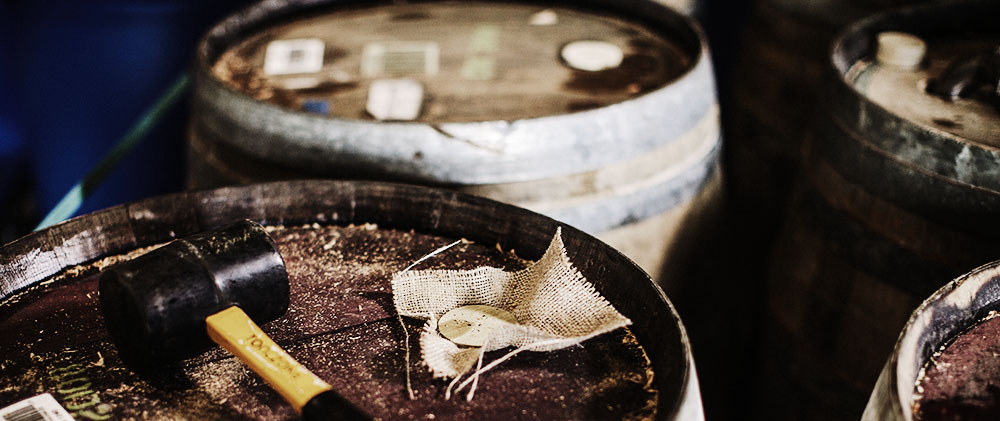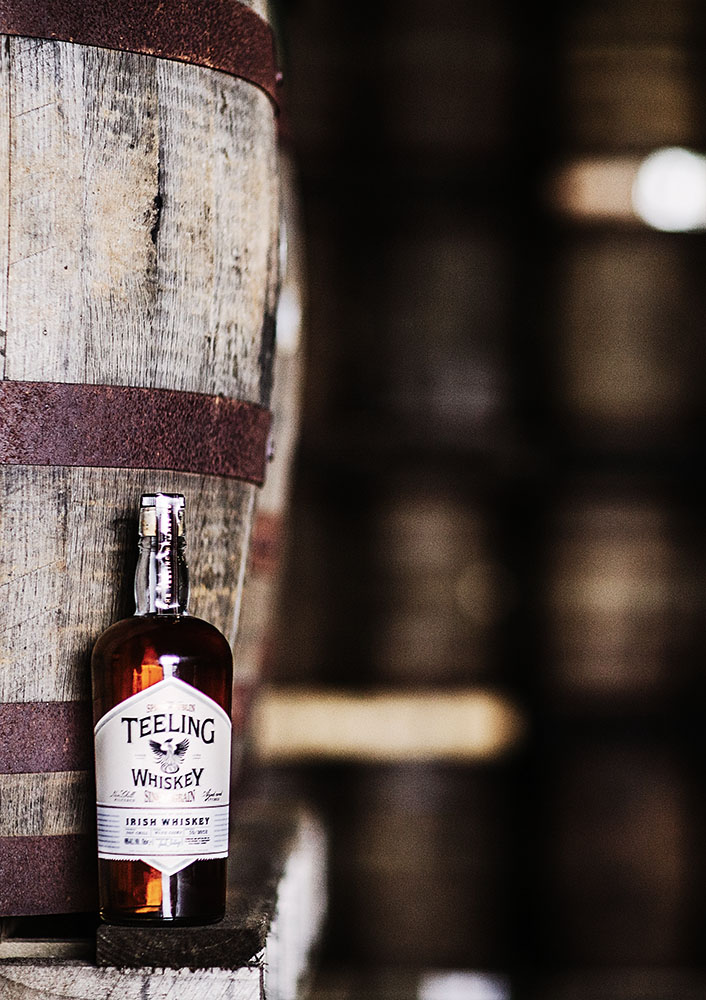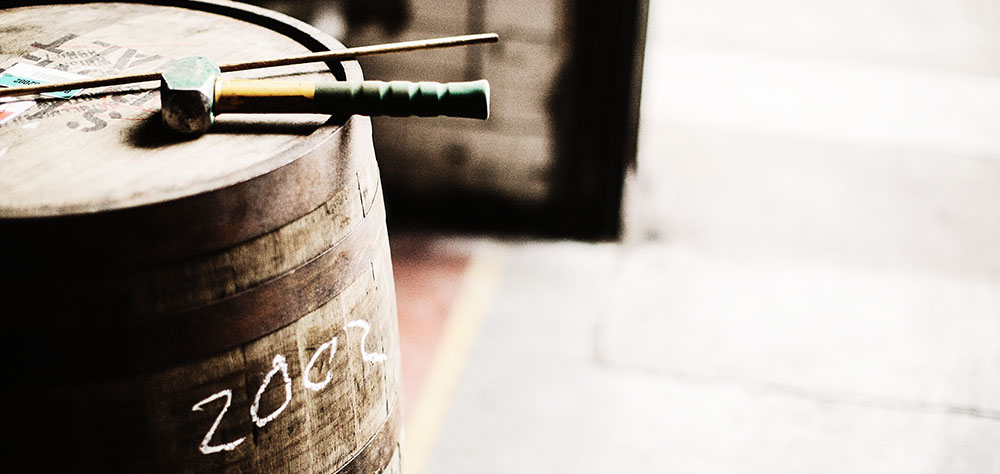
More than a century ago, whiskey in Great Britain and much of the rest of the world simply was Irish whiskey. It was made in small copper pot stills by several distilleries, each with its own unique style. Pot still Irish whiskey — full-bodied, spicy, creamy and complex — was the favorite tipple of Queen Victoria, and was by far the most popular after-dinner digestif, capturing 60 percent of the global whiskey market.
But in 1830, the column still was patented. By 1900, 70 percent of Irish whiskey was distilled in these new-fangled contraptions. A typical column still can produce as much whiskey in seven days as a typical pot still can in seven months. But column stills rarely produce the characterful flavours of pot stills. Eventually economics prevailed, and three or four international conglomerates wound up mass-producing the light, sweet and “easy-drinking” spirit that most of us know as Irish whiskey today. At one point, only one distillery (Midleton) was still making pure pot still, and Irish whiskey as a whole represented just two percent of global whiskey sales.
Irish pure pot still whiskey is unique because it is made by fermenting a mixture of malted and unmalted barley. We have the English tax man and Irish ingenuity to thank for this. Centuries ago, the English slapped a tax on malted barley, and the Irish responded by mixing unmalted barley into their recipe. In doing so, they created a new, and uniquely Irish, whiskey style. Malted barley, common to many whiskies, provides depth of flavour and a toasted-cookie sweetness, while the addition of green barley provides spicy, grassy, gingery tastes and an oily, viscous mouthfeel.
The exact ratio of green to malted barley varies from distiller to distiller, and is often a closely guarded secret. Recently a new legal definition of Irish pure pot still was adopted, requiring a minimum of 40 percent of both malted and green barley, and a maximum of 5 percent of other grains.

Preferably straight up or with a drop of water (but also good in full-flavoured cocktails), Irish pure pot still is enjoying a boom among whiskey aficionados around the world. Thankfully, in an evolution akin to the rise of craft beer in North America, the supply is starting to meet that demand. By some accounts, there are now 18 new Irish distilleries producing the elixir in the traditional manner. Although, since the law also requires a minimum of three years of barrel aging (and most producers prefer much more), there are only two distilleries that currently have whiskey available.
While waiting for their pot still products to mature, the newbies are making ends meet by distilling and selling vodkas and gins. Some also produce Poitín (pronounced pot-cheen, meaning “little pot”), a white spirit made from potatoes, sugar beets, malted barley and other bases that traces its ancestry to what we call moonshine.
The Irish are now optimistic that they will double their share of global whiskey sales over the next decade. Here are some of the new distilleries to watch for.
In Northern Ireland, the Echlinville Distillery started in 2010. Uniquely, its products are exclusively made from its own farmed and malted barley. Currently Echlinville sells more gin than whiskey, but pure pot still makes up about 80 percent of the whiskey being produced, and owner Shane Braniff plans his first release of five-year-old pure pot still in 2019. Judging from the quality his Echlinville Irish Pot Still Gin, the whiskey should be excellent.
In the Republic of Ireland, the Teeling Distillery in Dublin expects to release its first pure pot still this year. Head distiller Alex Chasko hails from Portland, Oregon, the capital of craft beer experimentation, and Teeling fittingly has an experimental approach, including trying crystallized rye, chocolate malt, and peated malts; comparing double- and triple-distillation; and aging in unusual casks (rum, red wine, Calvados, white Burgundy). Their whiskies have many different labels to reflect all these experimental styles, and are worth exploring. Teeling expects to be selling a pure pot still whiskey this year.
The Glendalough Distillery started in 2011 and bills itself as Ireland’s first craft distillery. Its motto is “Stand Apart.” Their intention is to do things differently, and if necessary, the hard way. Currently 40 percent of their production is gin, with a year-round version and several seasonals. All are made with fresh, wild botanicals gathered by hand by their full-time forager in the mountains around the distillery: juniper berries, gorse flowers, elderflower blossoms, coriander, sorrel and more. Their current whiskies are from another distillery’s stock but blended and finished in Glendalough’s own barrels. They are now acquiring two more pot stills to make their own single pot still whiskey. It will age in barrels made of Irish oak and will likely be available in 2022.
The Midleton Distillery started in 1825, and now operates under the Jameson name. For many years, it was the only champion and producer of Irish pure pot still, under a number of labels such as Redbreast, Powers, the “Spots,” its own Midleton label and others. Midleton makes an enormous variety and volume of many types of whiskey as well as pot still. It has a fine reputation for precision distillation and experimentation with different types of aging casks.
The Dingle Distillery is located in the picturesque seaside town of Dingle. It is the only other distillery currently selling pure pot still. Dingle makes gin, vodka and about 750 litres a day of whiskey. Fully manually operated, Dingle has in its nearly six years of existence produced less whiskey in total than Midleton does in one day. The distillery is scaling up, but will likely at most only double its current production. Dingle’s pot still whiskey stands out boldly — middle of the road is not the aim. The distillery uses wild yeast to maximize the development of congeners (flavour compounds) in its whiskey.
Dingle is experimenting with some 20 different cask types (including Champagne and Caribbean rum), and intends to release many versions in small batches. I was lucky enough to sample Dingle’s first batch of pure pot still. Aged in Pedro Ximénez sherry barrels, only 800 bottles were made — they have sold for as much as 500 Euros each online, if you can find them at all.

Getting a taste for pure post still
Tasting spirits is more about the smell than the taste, and hence is generally referred to as “nosing.” The best glass to use is small (about a six-ounce capacity) and tulip-shaped. Adding a few drops of water is permissible, but please no ice or soda, both of which cause flavour distortions.
The high alcohol content quickly tires your olfactory senses, so instead of putting your nose right into the glass (as I recommend you do with wine), keep your nose a few inches above the rim and inhale gently through your mouth and nose.
Next, take a small sip to condition your mouth, then a decent tipple to roll around your mouth, savour and finally swallow. If you are tasting several whiskies, remember that the alcohol will swiftly dull your nose and taste buds, so swallow as little as possible in a given sitting.
Echlinville Irish Pot Still Gin is trickle distilled, reflecting a slow and gentle distillation, from Irish barley. Bottled at 46% ABV, it has soft, sweet aromas of orange peel and spruce sap, and flavours of anise, lavender and coriander. The Echlinville Distillery’s signature cocktail features it with elderflower tonic, a lemon wedge and a sprig of mint.
Dingle Original Gin is bottled at 42.5% ABV. It has strong aromas of juniper, mountain ash berries and rowan berries, but it is perhaps the use of heather that also provides floral notes. The botanicals are not distilled, but rather placed in a porous basket and infused in the neck of the still. These flavours are powerful and fully dry so this gin can be enjoyed almost straight, possibly with an orange wedge.
The Glendalough Distillery produces a very interesting range of Irish gins, including four seasonal styles and several specialty approaches. The year-round Wild Botanical Gin is fairly traditional tasting, emphasizing juniper, citrus and pine flavours, but also has some spiciness on the finish. I was only able to taste one of the specialty versions, a wild blackberry and mountain heather gin. A pale pink, it is berry-fruity with a notable liquorice and coriander flavour on the finish, a gin for sipping on its own.
Redbreast 12 Year Old is the classic Irish pot still whiskey. Produced by the Midleton distillery, it is aged in used oloroso sherry casks, which marry the oily spirit with sherry-soaked Christmas cake spices and raisins, resulting in flavours of molasses, brown sugar, ripe figs and dates, all seasoned with ginger. Bottled at 40% ABV.
Redbreast 15 Year Old is slightly darker, and drier smelling, than its younger brother, and also stronger, at 46% ABV. Smells of cream soda seasoned with rose petals, pine and ripe figs. Lots of sherry on the long, prickly finish.
Powers Signature Release is made by Midleton for John Powers and Son. Less obviously sherry-influenced than the Redbreasts, it clearly shows the sappy, resinous character imparted to Irish pot still whiskey by the green barley, with smooth underlying vanilla flavours from mixed bourbon and sherry casks.
Yellow Spot is made by Midleton for Mitchell and Son. It is aged for 12 years in bourbon, sherry and Malaga wine barrels. Smells of black pepper, red currant, cloves and honey. Tastes of honey again, with apple and brown sugar notes giving it more sweetness on the palate than most other pot still whiskies despite the 46% ABV.
Green Spot is another classic pot still whiskey, sort of Yellow Spot’s older brother on a motorcycle. Made from the medium-to-heavy end of the distillate, and aged in bourbon and sherry barrels, it is dry, grassy and reminiscent of hard green fruit, but with a resinous, prickly edge to it.
Dingle Pot Still Whiskey is fairly dark in colour and, like the distillery’s gin, bold in flavour. Granny Smith apple peel meets ginger and honey with a creamy, vanilla-tasting texture on the finish. Even as compared to other distinctive Irish pot still whiskies, this one marches to its own drumbeat.
How to make it
Whiskeys are made from various grains, including rye, corn, wheat, barley and even oats.
The first step is to malt the grain. For instance, malted barley is barley that has been moistened until it sprouts, then dried to stop the new rootlets from consuming the seed’s valuable starch. Water is added, and the natural enzymes in the husk convert the starch into sugars. Next, yeast is added to cause fermentation, which converts these sugars into alcohols and other substances. At this point, you essentially have a fairly strong beer (called the “wash,” or “pig ale”), which is then distilled through heating.
There are two basic types of stills: pot stills (made of copper in a bulb shape, which distill one batch of whiskey at a time) and column stills (which distill continuously, like an assembly line).
At various temperature levels, various components reach a boil and become steam, which is then collected and condensed back into a liquid. Since alcohols have a lower boiling point than, say, water, distilling allows the capture and concentration of alcohols.
A skilled distiller discards (and perhaps re-distills) both the first, lightest liquids (the “weak feints,” which include poisonous alcohols such as methanol) and also the last, heaviest liquids (the “strong feints,” which often have off-flavours), retaining the “heart of the run” that has the desired alcohol and flavours. Knowing when to cut off the feints is the distiller’s art, and largely determines the unique taste of a final product. Midleton does this very precisely though computer analysis; smaller distilleries like Dingle and Glendalough do it manually, relying on the distiller’s taste buds to make decisions.
There are basically four whiskey types:
Grain whiskey is distilled in a column still from a variety of grains, usually mostly corn with only small portions of barley (e.g. your basic Jameson).
Single malt whiskey is distilled exclusively from malted barley by a single distillery in a traditional copper pot still (e.g. Bushmills 10 Year Old).
Blended whiskey is a mixture of grain and single malt whiskeys, usually mostly grain whiskey (e.g. Powers Gold Label).
Single pot still whiskey, uniquely Irish, is distilled from a mixture of malted and green unmalted barley in traditional copper pot stills (e.g. Redbreast).
To make Irish pot still whiskey, you have to distill at least twice, and generally three times. A quaint Irish tradition is to give each still a woman’s name. Teeling’s stills, for example, are Alison, Natalie and Rebecca, after the family’s daughters. Irish whiskey became known for being triple-distilled, but this was originally necessitated by English taxes on individual stills, causing the Irish to progress to using bigger and bigger stills to reduce the tax bite, which in turn necessitated an additional third distillation. The big Irish grain whiskey distillers make much ado about their column-distilled whiskey being triple-distilled, but there is not necessarily any advantage to the number of distillations: after all, distilling is a process of purification — if you distill whiskey enough times, you lose all the flavours and end up with pure alcohol.
After distillation, the clear, highly alcoholic “new-make” whiskey is barrel-aged. The barrels can be new oak, or previously used for (most often) bourbon, oloroso sherry or other contents. The kind of barrel and the length of barrel-aging strongly influences the colour, smell and taste of the final product.
Finally, you will see the term “chill filtration.” This process is intended to remove, prior to bottling, any microscopic bits (called “micles”) that might make the whiskey cloudy. It also changes and dulls the flavours. Avoid it if possible
